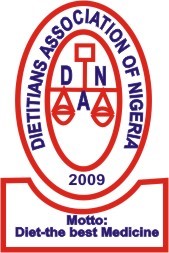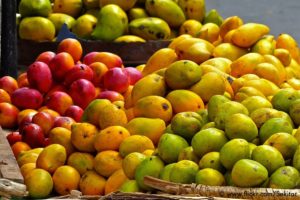Nutrient Composition of Freeze-Dried and Oven-Dried Soursop (Annona Muricata) Pulp Powders and Sensory Evaluation of their Drinks Compared to Fresh one
Onyechi, U. A., Ibeanu V. N., *Okechukwu T. P. and Nsofor L. D.
Department of Nutrition and Dietetics, University of Nigeria, Nsukka, Enugu State
*Corresponding Author: [email protected]
ABSTRACT
Background: Soursop is underutilized and highly perishable, tropical fruit rich in several nutrients.
Objective: This study determined the nutrient composition of freeze-dried and oven-dried soursop (Annona muricata) pulp powders and sensory evaluation of drinks made from them compared with the fresh one.
Materials and Methods: Mature soursop fruits were purchased at a local market in Nsukka, Enugu State, Nigeria. The fruits were allowed to ripen for 5 days at room temperature (37°C). The ripe fruits were washed, peeled, seeds handpicked and the pulp dried. Freeze-drying was done at -40°C for 72 hours, oven-drying at 70° C for 48 hours. Nutrient content was determined using standard methods. Each of the freeze-dried and oven-dried soursop powders (100g) was liquefied with 500mls of water to formulate unsweetened drinks. A hundred grammes each of the dried powders were liquefied with 500mls of water and flavoured with four tablespoons (60g) of honey to formulate sweetened drinks. Fresh soursop pulp (200g) was liquefied with 400mls of water and flavoured with four tablespoons (60g) of honey to formulate sweetened fresh drink. Sensory evaluation of all the drinks was conducted using a 9-point hedonic scale. Data obtained from the study were analyzed using the Statistical Product for Service Solution (SPSS) for Windows version 21. Results were presented as means and standard deviations. The researcher used Analysis of Variance (ANOVA) and Duncan’s new multiple range tests to separate and compare means at p < 0.05.
Results: The freeze-dried powder had higher moisture (12.86±0.01%), fat (6.66±0.01%) and carbohydrate (43.70±0.01%) contents while the oven-dried sample had higher protein (20.37±0.01%), ash (12.26±0.01%) and crude fibre (16.36±0.01%) contents. Vitamin C content was 2.76mg/100g (Freeze-dried soursop, FrDS) and 1.69mg/100g (Oven-dried soursop, ODS), vitamin B was 0.05mg/100g (FrDS) and 0.04mg/100g (ODS) and 1 vitamin B was 0.09mg/100g (FrDS) and 0.05mg/100g (ODS). Ca was 1.18mg/100g and 1.46mg/100g; Fe was 2 24.26mg/100g and 33.35mg/100g; Mg was 42.26mg/100g and 55.58mg/100g; Na was 20.15mg/100g and 25.58mg/100g; K was 23.35mg/100g and 36.67mg/100g; Zn was 0.87mg/100g and 1.56mg/100g while P was 29.36mg/100g and 66.57mg/100g for the FrDS and ODS soursop powders respectively. The drink from fresh soursop (FSD) had the best score for overall acceptability (7.75±0.85) at p < 0.05 compared to the other drinks.
Conclusion: Dried soursop pulp, especially oven-dried, can be a good source of protein, fibre and minerals including K, Fe, P, Mg and Na while the freeze-dried soursop is a better source of carbohydrate, fat and vitamins than the oven-dried. Dried soursop pulp has potential in the prevention of micronutrient deficiencies as well as PEM.




